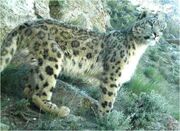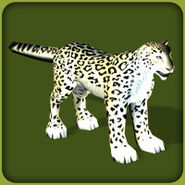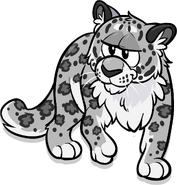
There are few sights in nature as breathtaking as a snow leopard (Panthera uncia) moving across the mountain. This muscular, agile cat, with its huge paws and long hind legs, can leap 15m horizontally and 6m vertically as it traverses the broken landscape. The average annual diet for one snow leopard has been calculated as five blue sheep (or bharal), nine Tibetan woolly hares, 25 marmots, five domestic goats, one domestic sheep and 15 birds.
Most active at dawn and dusk, the snow leopard grows to a height of 50-70cm, is up to 130cm long in the body and can weigh 75kg. Its thick fur is light or smoky grey, tinged with yellow, shading to pure white on its belly and with 'rosettes' of dark spots scattered all over. Its thick tail is nearly a metre long and it has dense, woolly underfur.
Although endangered and protected and with total numbers down to 4500-7500, the snow leopard is still hunted, not only for its pelt but also for bones and body parts used in traditional Chinese medicine. This, together with depletion of its natural prey, habitat degradation and fragmentation and reprisal attacks by herdsmen for loss of livestock, means the snow leopard faces an uncertain future.
Its geographical range mirrors that of two of its largest prey species, the blue sheep and the ibex: the mountains of China, Bhutan, Nepal, India, Pakistan, Afghanistan, Tajikistan, Uzbekistan, Kyrgyzstan, Kazakhstan, Russia, and Mongolia.





